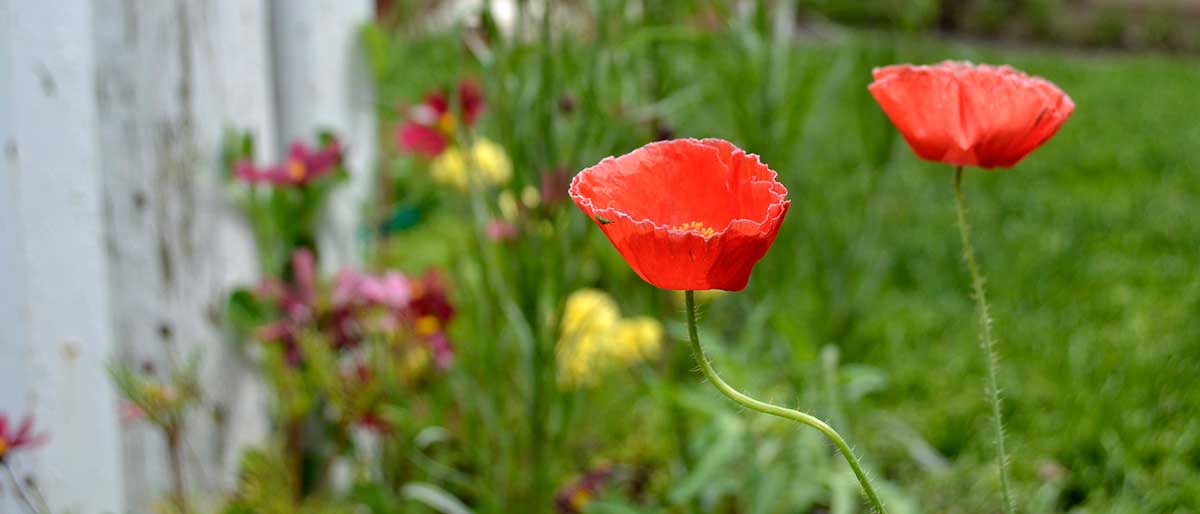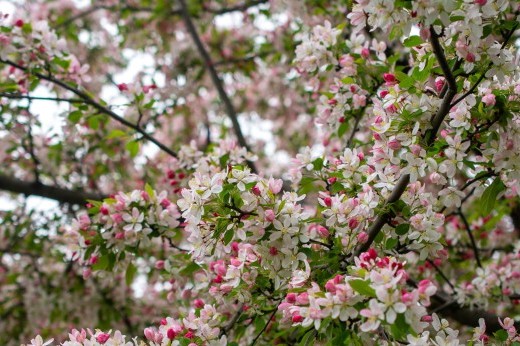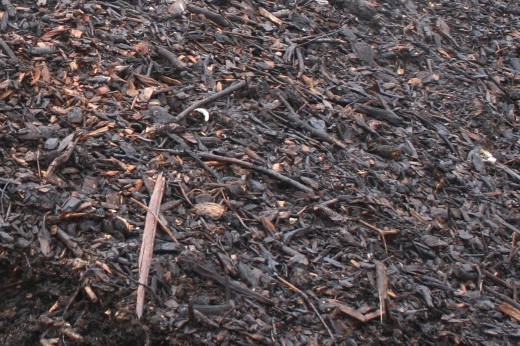Angela Ferguson, a member of the Onondaga Nation (Eel Clan), is supervisor of the Onondaga Nation Farm and a member of Braiding the Sacred, a grassroots network of Indigenous corn growers.
Known as a leader in the Indigenous food sovereignty movement, Ferguson helps grow and distribute food for members of the Onondaga Nation while helping to care for and redistribute a collection of over a thousand varieties of seeds, some up to 4,000 years old, belonging to Indigenous people and Nations.
The Onondaga Nation is part of the Haudenosaunee Confederacy, an alliance of six Nations whose ancestral territory covers much of what is now called upstate New York. The Onondaga Nation has filed suit to regain rights to their land, most recently taking their case to an international panel.
We spoke with Ferguson, who is working with Brooklyn Botanic Garden’s Interpretation team as an advisor, about what food sovereignty means in her community, traditional Haudenosaunee agricultural practices in use at the Onondaga Nation Farm today, and the importance of saving seeds.
Do you remember the first time you grew food?
Growing food was not just part of our lives, but part of our education too. At school, we always had programs that were based around agriculture. I was born and raised on the Tuscarora Nation, which is about three hours from my homeland, Onondaga Nation, and when I moved back to Onondaga Nation, I just continued to grow my own stuff in the backyard. I started doing more collective planting for community in 2010. I worked in an elders’ garden here that we had in the community. In that garden, we grew food for the elders that couldn’t do it anymore. We used to pass out the foods to them for free.
Was food sovereignty something you always thought about?
No, not really. My life was like everybody else’s, busy and into modern things. A lot of colonial foods and fast foods had become a big part of my life. But I think once you return to your roots, it triggers something in your DNA to make you realize, those things are not good for us.
My real motivation for going into food sovereignty was because I noticed that a lot of our communities focus on reducing the harm and effects of alcohol and drugs, but nobody was really focusing on the harm and effects of food-related illnesses.
Food-related illness has been a huge concern not just in my own community, but all Indigenous communities, and all communities in general. Heart disease, diabetes, strokes, all of these things are food-related illnesses, and the only way we're going to get cured is if we return to our ancestral foods and start feeding ourselves again.
When people ask you to define food sovereignty, how do you explain it? What does that mean to you?
Well, it’s hard, because a lot of those words in the English language don’t have a literal translation into our languages—things like regenerative agriculture, organic farming, heirloom seeds. Food sovereignty sort of became a buzzword; people were talking about it, and there were some big organizations that were really doing the work to make it happen.
But in my definition, it’s truly just coming back to Haudenosaunee ways and our agriculture, because all of our ceremonial cycles are based around food. Food sovereignty is returning to your ancestral ways, growing your traditional foods on your own land, and utilizing that gift to return it to the community.
When did you start the Onondaga Nation Farm, and what are some of the growing practices you use?
It started right after the World Lacrosse Championship was hosted here. We had approximately 10,000 people from around the world come to our community, and we fed them during that time. And a lot of that food was our traditional foods, things we grew, things we butchered. In 2016, our Council of Chiefs allowed us to create a program for our community.

We went back to controlled burning, to create medicine for the land and food for the land. Fire produces ash, which helps prevent weeds and provides nutrients for the village that lives in the soil. Soil is alive, so it needs to be fed and protected. That took practice, we had to reconnect with fire. And that was really fun, it’s become a big part of what we do.
We want to keep our soil full of nutrients, so we don’t plow. It’s funny, I’ve been telling local farmers that were not Native, like, why do you guys plow? You’re putting all the nutrients in the air. And they don’t do it anymore! A lot of places are now doing low-till or no-till farming, and they’re finding that you get a better yield.
We also use crop rotation. We plant corn three times, and then the following year, we replace that with beans. The next year, we’ll plant squash or something to that effect. And then in the last year, we let the field grow fallow. We let all the weeds and native species grow, and then we start the process over again the next year with that controlled burn.
We’re going back to following the seasonal ways of planting certain foods, and learning how to grow companion plants well with one another. We’ve had to seek all of that knowledge from what I call our encyclopedia, which is our elders. When we don’t know what to do, or we don’t know how to fix a problem, we reach out to them.
What are some of the different varieties of corn that you like to grow?
I like to grow all of them. Every year I pick a different one. My favorite is the Grandmother pod corn, because that corn is the ancestor to all the others. We have 163 acres, so I usually do anywhere between nine and 13 different varieties of corn. Over the years, through practice, through paying close attention to them, I’ve been able to see which ones have pollen flying at this time and which ones don’t, so that I can plant them side by side without them cross-pollinating.

It’s kind of like a little dance—writing down things down to remember that this one will produce pollen first, and this one you can plant next to it because it won’t produce any for another couple of months. I keep track of how high the plants grow, because sometimes we can plant shorter popcorns right next to them. A lot of that was learned through practice over the years, and from our elders.
How is the food distributed?
We have a free farmer’s market where, when things are ready for harvest, we put them out on tables in the center of the community. And sometimes we’ll can goods, or we’ll give away mason jars full of soup. People love it. They just take what they need for their family, and they visit with us. If they have any suggestions or ideas for plants they may want us to grow, that’s where we get a lot of feedback. It’s been great at pulling our community together.
For 2025, my goal is to demonstrate what Haudenosaunee nutrition is. What did that look like, pre-contact, and what are we able to implement in our diets now? We need to be realistic, especially with our young people, but how can we have a good balance and introduce traditional foods?
A lot of Haudenosaunee nutrition is based around seasonal eating and cultural practices. Not every people based their eating schedules around breakfast, lunch, and dinner. Part of the Haudenosaunee nutrition is listening to your body, eating in smaller quantities, but more times throughout the day. A common Haudenosaunee practice was that there was always a pot of food standing over an open fire.
There are also nutrition facts that I want to make people aware of. Like, what are the health benefits of white rice versus wild rice? What are the nutritional components of genetically modified corn and our traditional Haudenosaunee corn?
Can you tell me about Braiding the Sacred, and how it relates to the work you do at the Onondaga Nation Farm?
Right after we started the farm in 2016, I had met fellow growers from other Nations, and we started up a little collective of Indigenous corn growers. It’s a grassroots movement.
We had our first gathering here where we decided, okay, we can see the impact technology is having. We don’t have that many farmers left. There’s not that many corn growers. And all the people growing corn feel like, I’m the only one doing this, does anyone else care? I’m lucky here in my community that people have always kept that going, but I’ve traveled to other communities where maybe there’s only one or two people growing corn.
So we decided to start this collective to tap into the knowledge of all the elders across Turtle Island. The goal was to reconnect and rebuild trust between Nations. The group started out with about 50 people, and now we have thousands. It grew really fast.
You also house a collection of ancestral seeds at the farm, many of them originally collected by corn farmer Carl Barnes. How did Braiding the Sacred come to steward these seeds?
When Carl Barnes passed away, his family gifted his corn seed collection that he had spent his whole life growing and maintaining to his apprentice, because he shared the same passion. The apprentice reached out to Braiding the Sacred to come and have a discussion about it, and he realized we shared all the same values. So he gave the entire collection to Braiding the Sacred for us to steward and help rematriate.
I ended up reaching out to my community members, my leadership, to see if this was something we could house at the farm. We don’t think of it as owning it, because nobody owns the seeds. Nobody owns life. We just provide a temporary home for them until they can be reunited with their homelands and their people.
Now our work at Braiding the Sacred is more focused on rematriation of seeds and returning these ancient varieties back to their communities.
Some older varieties we try to grow, as well, so that they’ll still be viable. But for us, I don’t believe there’s ever an expiration date on corn. I’ve planted seeds that are hundreds of years old. We have practices that can wake those seeds up. A scientist would say, well, corn only has a shelf life of this time. And as Indigenous people, we don’t believe that, because we see it all the time not to be true.
Who was Carl Barnes, and how did he collect these seeds?
Carl Barnes spoke the language of corn. He was half Cherokee and half Scottish, and he loved farming. He loved growing corn. He really saw the importance of it, and we feel compelled to keep his life mission going.
He used to go around to different conferences and carry these briefcases with cobs of corn inside, and he would use them as conversation starters to really get people to understand, this is what we have to protect.

He went to seed swaps, he shared seeds, he presented at universities all around to educate the next generation about the importance of these things. People would give him seeds that they found or grew. Archeologists gave him seeds. Everybody knew him, so a lot of people trusted him with their seeds.
Some of them have been lost for generations. There are varieties sometimes that people didn’t even know existed. That happened to us. We were able to bring back four different varieties of Haudenosaunee corn because of Carl’s life’s work, because no one here had the seeds for it.
I think it’s important for me to mention, when one person feels all alone and thinks they don’t matter, and “who’s going to care what I think or what I do,” I always think about Carl. He didn’t know it when he was alive, but keeping those little cobs of corn going has changed millions of lives, and it’s rippled all around the world.
How can institutions like botanical gardens, and other public green spaces, create more space for conversations around Indigenous foodways and food sovereignty?
I think any organized institution sometimes makes Indigenous people leery or nervous. There’s mistrust that's part of our historical trauma. What we do have, we hold on to really tight, because we don’t want to lose it again.
There needs to be a presence at botanical gardens. There need to be indigenous plants, but if the plants are going to be there, so do the people, because the people have the knowledge of the plants, the people have the relationship for millennia with those plants.
I’d like to see more Indigeneity in these places, because hearing that perspective from the people that know the land the best, it would be validating our oral traditions. And I think that’s really important, because our knowledge was put down, our food system was put down, our language, our ceremonies, and we have managed to still maintain all those things.
You do a lot, across many different spheres in your life. What keeps you energized?
I think the foods, you know? I found my gift. I’m so thankful. All my life, I didn’t know what my purpose was. And I know a lot of young people feel that way, even people in their 30s—where am I going? What am I doing?
The food really called me. And I love to cook. These are gifts my grandmothers left to me. A lot of women who stayed home and did the cooking never got the recognition for the art form they had created. So it’s not just growing food, but it’s also presenting that food to people as something they’re actually going to eat. I love that part of what I do.
And then the seeds, I just feel so privileged. You gather power from your ancestors every time you pick them up. And I think that’s what keeps me going.




